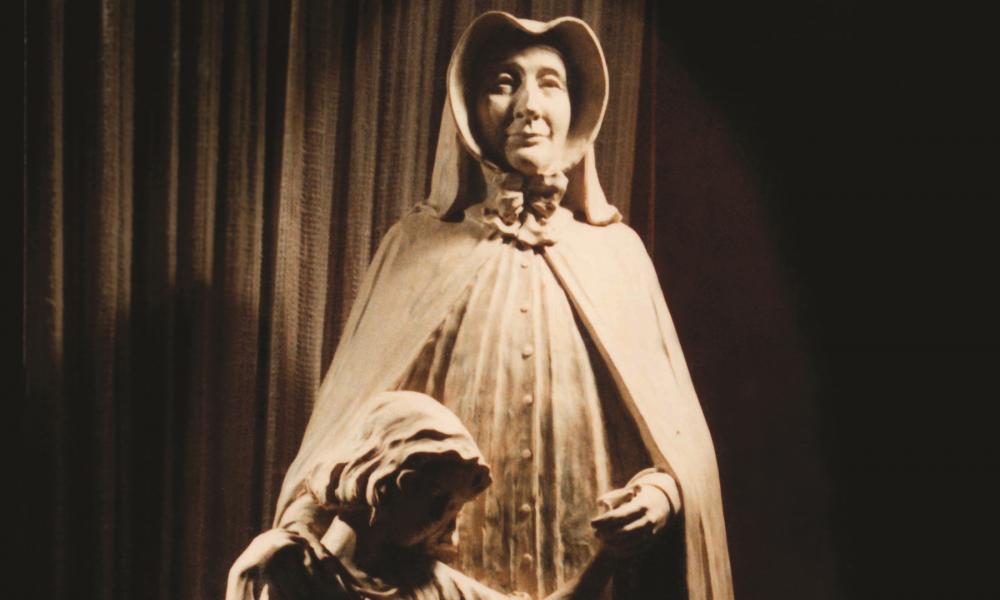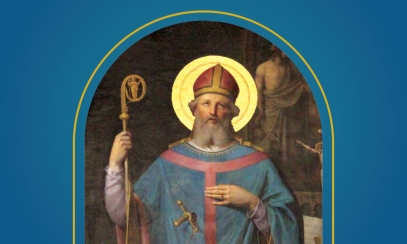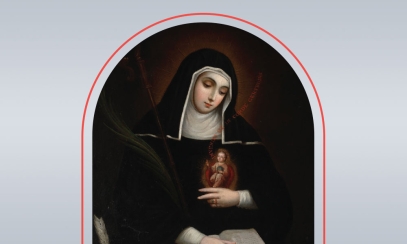
Blessed Pauline von Mallinckrodt
Father Denis Spitzley of St. Mary Parish, Charlotte, and Bishop Earl Boyea have been involved in the cause for canonization of Pauline von Mallinckrodt, a German-born nun who visited Westphalia for five days in 1880.
As a boy at St. Mary School in Westphalia, Father Denis read about the life of Blessed Pauline, and was impressed. But he hardly gave it another thought, until he had finished seminary and been ordained for several years.
That changed when Sister Pauline was beatified in 1985. The following year, Father Denis inherited a day-care program at his new parish, St. Joseph in Owosso. He remembered that Blessed Pauline was known for feeding and caring for the poor, and for operating schools for children of working mothers and for the blind. So St. Joseph’s Child Care Services was publicly dedicated to her intercession. In just two years, enrollment jumped from 86 to 268.
Since then, Father Denis has been determined to see Blessed Pauline canonized. He says of her, “I feel like I know her, and I love her, though we have never met. Her sisters taught me in grade school about divine providence – that if a door closes, a window will open. She has helped me through hard times, and I love her charism of helping the poor.”
In May 2002, the director of the child-care program in Owosso, Judy Barrett, had an operation for neck cancer. Many Blessed Pauline guild members (Judy was one) and associates of the Sisters of Christian Charity, the order which Pauline founded, were praying for her. During the procedure, Judy began bleeding uncontrollably. When the doctors had almost given up hope of saving her, the bleeding suddenly stopped. In two separate letters about the operation, the chief surgeon, Dr. Harry Herkowitz, (who is not Catholic, nor even Christian), wrote that it was “beyond coincidence,” and “that a miracle may have happened.”
Father Denis notified Dr. Andrea Ambrosi in Rome, the postulator for Blessed Pauline’s canonization cause, and Mother Adalberta Mette, the superior general of the Sisters of Christian Charity, about the possible miracle. In 2006, Dr. Ambrosi came to the U.S. to speak with some of the physicians involved, and to ascertain from Judy Barrett, Father Denis and other witnesses whether a devotion to Blessed Pauline existed. Satisfied, he then petitioned Cardinal Adam Maida, archbishop of Detroit, to begin an investigation, since the alleged miracle had taken place in Maida’s diocese, at Beaumont Hospital in Royal Oak.
In April, Cardinal Maida established a tribunal to investigate the alleged miracle. The process closed on May 30, 2006, with the sealing of the 586-page document that was then sent to the Congregation for the Causes of Saints in Rome. On Cardinal Maida’s behalf, Bishop Boyea, then an auxiliary bishop for Detroit, presided at both the opening and closing of the tribunal.
Judy Barrett, who died in December 2006, told people constantly that she “had been touched by the hand of God” during her operation. Now, experts in the Congregation for the Causes of Saints, including physicians, will be deciding if a miracle did occur. If so, the congregation will recommend the cause of Blessed Pauline to the Holy Father for his decision as to whether she should be named a saint.
Because of Father Denis’ devotion to Blessed Pauline, and his work in behalf of her cause for canonization, he became the first priest worldwide named by the Sisters of Christian Charity as an associate member. More information about Blessed Pauline is at www.sccwilmette.org.
So, how does someone become a saint?
The canonization process normally can’t begin until five years after the individual’s death, although this requirement was waived by the pope for Mother Teresa and Pope John Paul II.
A diocesan bishop, a religious order, or even an individual can present, and financially support, a cause for canonization. A postulator, who acts as a legal advocate, is then chosen to coordinate and promote the cause. The writings of the person under consideration must be scrutinized, witnesses interviewed concerning the sanctity of the person and reported miracles investigated.
Upon completion, a report is sent to the Congregation for the Causes of Saints for further study. Theologians and other experts review the materials. If it is found that the person’s life is characterized by virtue, martyrdom, alleged miracles or age-long public devotion by the faithful, the congregation will recommend to the pope that the church declare the servant of God worthy of veneration. The cause is then officially opened.
A miracle attributed to the person’s intercession after death is needed for beatification, then another one for canonization. The diocesan bishop where the alleged miracle occurred carries out that investigation (see main story).
The pope decrees the various stages toward canonization and decides on what day the feast of the saint is to be celebrated. His act of canonization is regarded as infallible.



